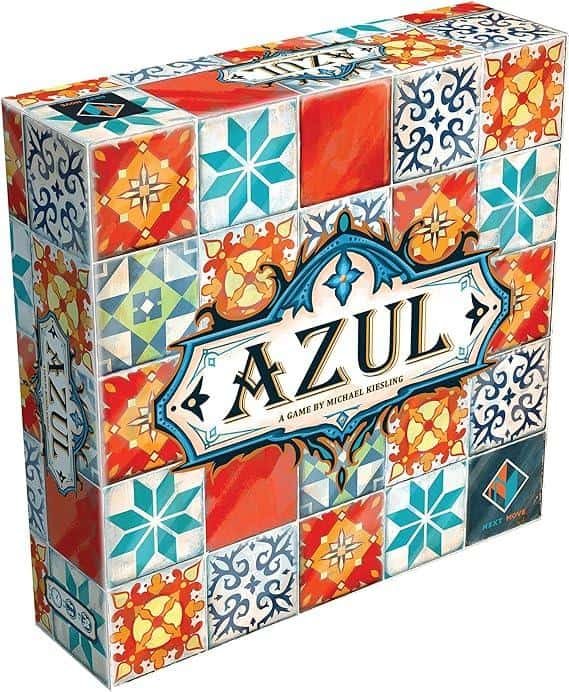
Why Azul Has Become a Modern Classic
Azul burst onto the tabletop gaming scene in 2008 and quickly established itself as a modern classic. This Spiel des Jahres award winner combines striking visual appeal with elegant gameplay mechanics, making it accessible to newcomers while offering satisfying depth for experienced players.
What makes Azul special? Its perfect balance of:
- Simple, intuitive rules that can be learned in minutes
- Strategic depth that rewards careful planning
- Beautiful components that create a visually stunning experience
- Accessible gameplay for ages 8 to 80
In Azul, players draft colorful tiles to create patterns on their personal game boards, scoring points for completed rows, columns, and sets. The game’s tile-drafting mechanics and spatial puzzle elements create an engaging experience that keeps players coming back for more.
For fans of Azul looking to expand their collection with similar experiences, we’ve curated this list of the 5 best board games like Azul that capture that same magical combination of accessibility and strategic depth.
Best Board Games Like Azul
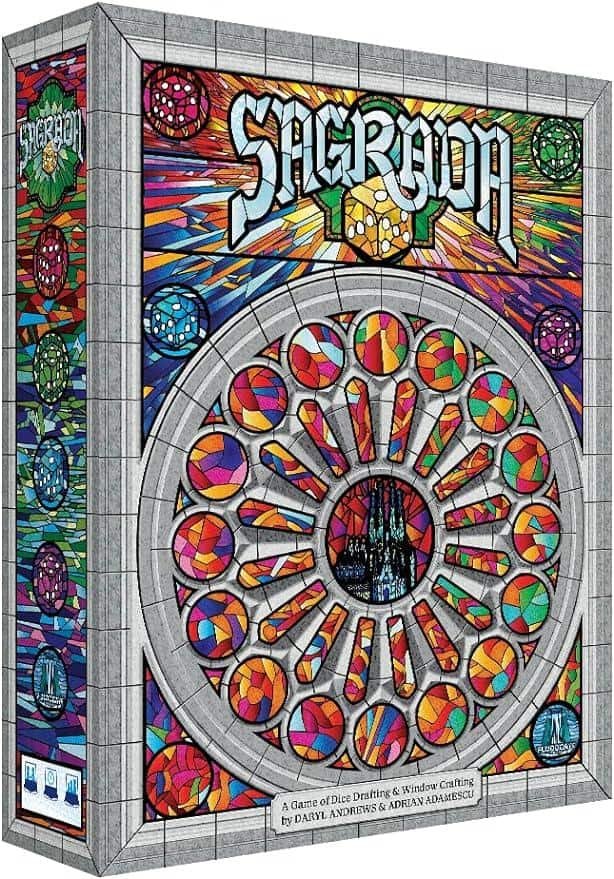
Sagrada
By: Floodgate Games Players: 1-4 Time: 30-45 Minutes Ages: 14+
Aside from the several expansions Azul spawned, Sagrada probably offers the closest thing possible to the game you can get. With it’s similar mechanics and stunning visuals, it represents all the positives of Azul and provides a similarly enjoyable experience.
Why It’s Like Azul: Of all the games on our list, Sagrada offers perhaps the closest experience to Azul, combining stunning visual appeal with satisfying drafting mechanics.
In Sagrada, players craft beautiful stained glass windows by carefully placing colorful dice on their personal player boards. Each placement must follow specific color and value restrictions, creating an intricate spatial puzzle that feels both familiar and fresh to Azul fans.
Key Features:
- Dice drafting replaces Azul’s tile selection
- Personal pattern boards with unique challenges
- Tool cards provide strategic advantages and flexibility
- Gorgeous table presence with translucent colored dice
What Makes It Special: Sagrada adds an extra dimension to the drafting puzzle with dice values as well as colors. The semi-transparent dice create a genuinely beautiful finished product that rivals Azul’s visual appeal when completed.
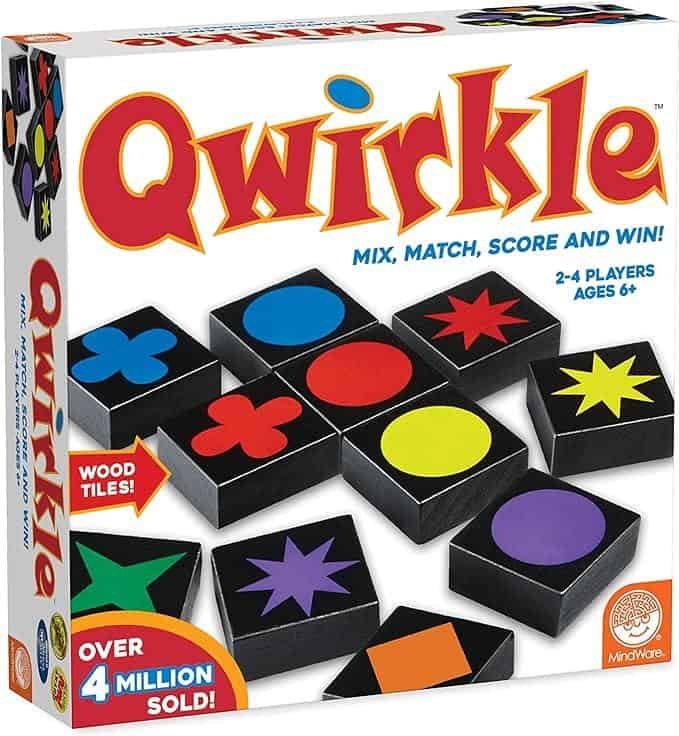
Qwirkle
By: Mindware Players: 2-4 Ages: 6+ Time: Up to 45 mins
Why It’s Like Azul: Qwirkle shares Azul’s pattern-building DNA while offering a more accessible entry point for younger players or those newer to modern board gaming.
Think of Qwirkle as “Scrabble with shapes and colors” – players create rows and columns of matching colors or shapes, scoring points for each tile in the connected line. The simple matching mechanics conceal surprising strategic depth as you balance making your own scoring opportunities while limiting your opponents’.
Key Features:
- Pattern matching with shapes and colors
- Simple rules make it family-friendly (ages 6+)
- Quick turns maintain player engagement
- Portable wooden components
What Makes It Special: Qwirkle’s brilliance lies in its simplicity – the rules can be explained in under a minute, yet the decision space remains rich and rewarding. Its family-friendly approach makes it more accessible than Azul for mixed-age groups.
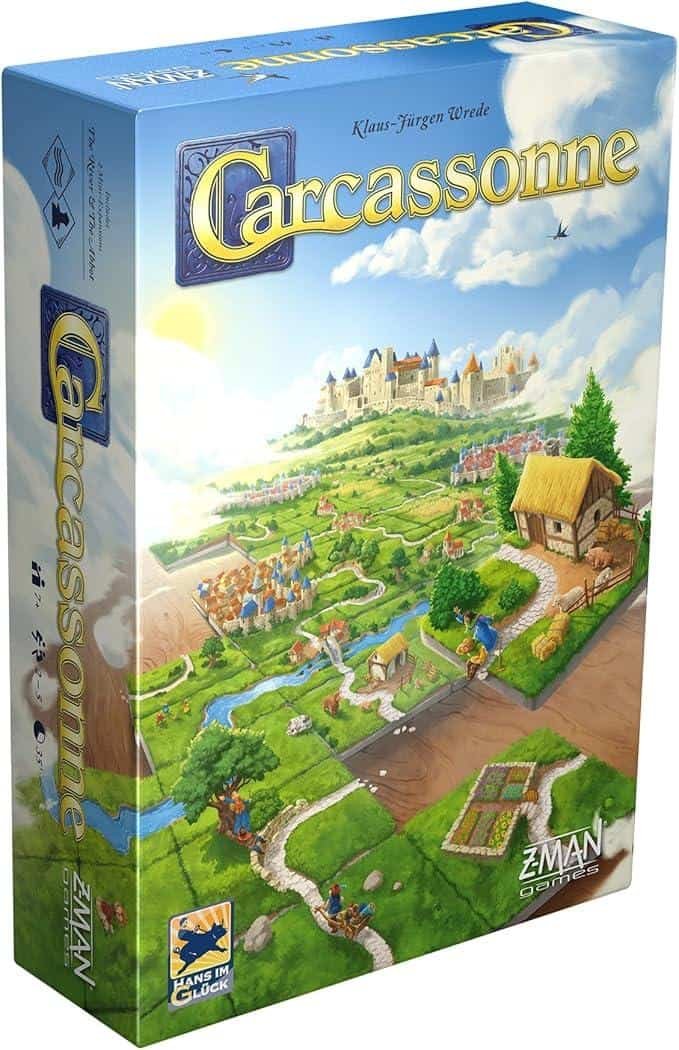
Carcassonne
By: Z Man Games Players: 2-5 Time: 30-45 minutes Ages: 7+
Why It’s Like Azul: Carcassonne offers the same satisfying tile-placement puzzle as Azul but with a more territorial control element and medieval theme.
Named after the historic French city, Carcassonne has players placing landscape tiles to build cities, roads, monasteries, and farms. As the shared landscape grows, players strategically place their meeples (wooden followers) to claim features and score points.
Key Features:
- Collaborative landscape building with competitive scoring
- Territorial control through strategic meeple placement
- Variable setup ensures no two games play the same
- Expandable system with dozens of expansions
What Makes It Special: Unlike Azul’s separate player boards, Carcassonne creates a single, shared landscape that evolves throughout the game. The “area control” element adds a layer of interaction as players compete for valuable features.
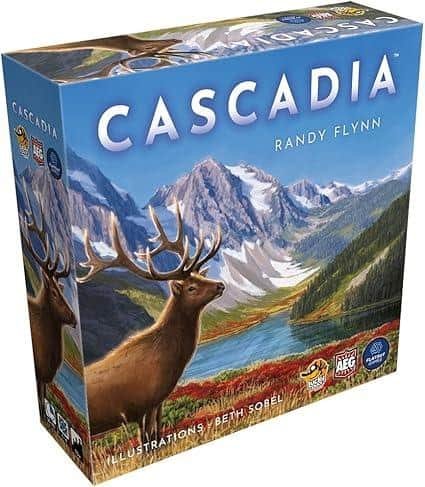
Cascadia
By: Flatout Games Players: 1-4 Time: 30-45 minutes Ages: 10+
Why It’s Like Azul: Cascadia captures Azul’s satisfying tile-selection and pattern-building mechanics while introducing a nature theme and additional scoring objectives.
Set in the Pacific Northwest, Cascadia challenges players to build wildlife habitats by drafting and placing hexagonal terrain tiles alongside animal tokens. Players score points by creating matching habitat corridors and arranging animals in specific patterns unique to each species.
Key Features:
- Dual-layer drafting (habitat tiles AND wildlife tokens)
- Multiple scoring objectives for each wildlife type
- Solo mode for single-player experience
- Nature theme with beautiful artwork
What Makes It Special: Cascadia’s dual-drafting mechanism adds complexity without overwhelming players. The variable scoring conditions for each wildlife type (bears, elk, salmon, hawks, and foxes) ensure high replayability as you’ll need different strategies each game..
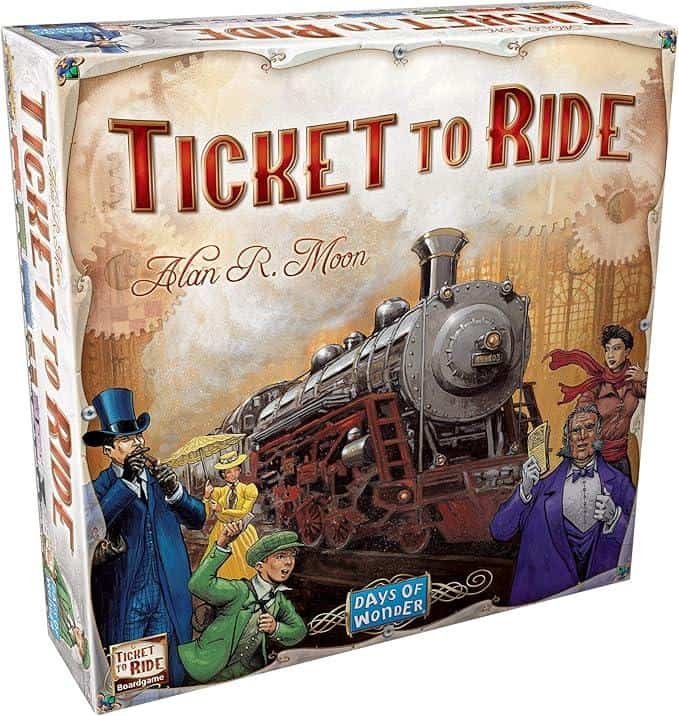
Ticket To Ride
Published by: Days of Wonder Players: 2-5 Time: 30-60 minutes Ages: 8+
Why It’s Like Azul: While mechanically different, Ticket to Ride shares Azul’s perfect balance of accessibility and strategy that makes it excellent for both casual and serious gamers.
In this modern classic, players collect and play matching train cards to claim railway routes connecting cities across North America. Completing routes earns immediate points, while fulfilling destination tickets connecting distant cities earns additional points at game end.
Key Features:
- Card collection and set management
- Route building across a shared map
- Hidden objectives through destination tickets
- Easy-to-understand scoring system
What Makes It Special: Ticket to Ride has introduced millions to modern board gaming thanks to its intuitive rules and satisfying gameplay loop. The tension between focusing on your routes versus blocking opponents creates meaningful decisions throughout.
- Easy to learn with straightforward rules.
- Fast gameplay with high replay value.
- Combines strategy with fun map-building.
- Light on player interaction.
- Can feel repetitive without expansions.
- May be too simple for heavy strategy gamers.
So those are a handful of games that share some similarities to Azul that we think you’ll enjoy. They share some similarities with the game, whether it be mechanics, theming, or setting, and are just as fun to play. If there’s any we haven’t listed that would have made your list we’d love to hear about them.
Cooperative Games
While Azul is competitive, some groups prefer cooperative experiences. If you enjoy Azul’s puzzle aspects but want collaborative gameplay, consider:
- Pandemic – Work together to fight global disease outbreaks
- The Crew – Coordinate card play to complete space missions
- Forbidden Island – Collect treasures from a sinking island before time runs out
Also Read: The Best Cooperative Board Games
Beyond the Base Game: Azul Expansions and Sequels
If you love Azul, don’t miss these official expansions and standalone sequels:
Azul: Stained Glass of Sintra
This first standalone sequel introduces translucent window panes and a new scoring system focused on completing specific window sections.
Azul: Summer Pavilion
Featuring star-shaped patterns and wild joker tiles, Summer Pavilion adds more planning flexibility while maintaining Azul’s core drafting mechanics.
Azul: Queen’s Garden
The latest in the series transforms the tile-drafting into a three-dimensional garden-building experience with polyomino pieces.Each Azul sequel maintains the elegant simplicity of the original while introducing new challenges and strategic considerations.
Conclusion
In conclusion, Azul is an exceptional board game that combines strategy, creativity, and social interaction in a beautifully designed package. Its simple yet engaging gameplay makes it an excellent choice for board game enthusiasts of all skill levels. Whether you’re looking for a competitive challenge or a cooperative experience, Azul has something to offer. With its various sequels and expansions, the game continues to evolve, providing new and exciting ways to play. So why not give Azul a try and discover for yourself why it stands out among the best board games? Happy gaming!
FAQ
1. What makes Azul a standout board game?
Azul is renowned for its simple rules, strategic depth, and stunning visual appeal. It serves as an excellent gateway game, attracting both casual players and dedicated hobbyists alike. The game involves drafting tiles to create patterns, with the objective of scoring the most points by forming long lines of tiles. Players must also consider the impact of their moves on opponents’ boards, adding a layer of strategic depth to the game.
2. How does Sagrada draft dice compare to Azul?
Sagrada shares many similarities with Azul, such as its beautiful aesthetics and strategic gameplay. However, Sagrada focuses on placing colorful dice on a personal game board to form patterns while adhering to specific placement rules. It offers a unique experience with its own set of challenges and objectives. In Sagrada, players draft dice to create intricate patterns, adding a unique challenge to the game.
3. What is the gameplay of Qwirkle like to score points?
Qwirkle is a simple yet challenging puzzle game where players use tiles with colored shapes to form patterns similar to those in Dominoes or Scrabble. The goal is to create rows and columns by matching colors or shapes, with bonus points awarded for completing full rows or columns. Qwirkle is a game that can be enjoyed by family members of all ages, making it a great choice for family gatherings.
4. How is Carcassonne played?
Carcassonne is a tile placement game where players draw and place tiles to build roads, farms, and towns. The objective is to create the largest connected areas to score points. Players use Meeples to claim areas, scoring points once sections are completed. The game combines luck and strategy, making it suitable for players of all experience levels. The game concludes with a final round where players make their last moves to maximize their points.
5. What makes Cascadia unique among board games?
Cascadia is a tile-laying and token-drafting game where players build wildlife habitats in the Pacific Northwest. The game involves creating corridors of matching habitats and fulfilling specific wildlife patterns to score points. Its easy-to-learn rules and strategic depth make it a highly replayable and enjoyable experience. With its strategic depth and replayability, Cascadia is truly a great game for both casual and dedicated players.





